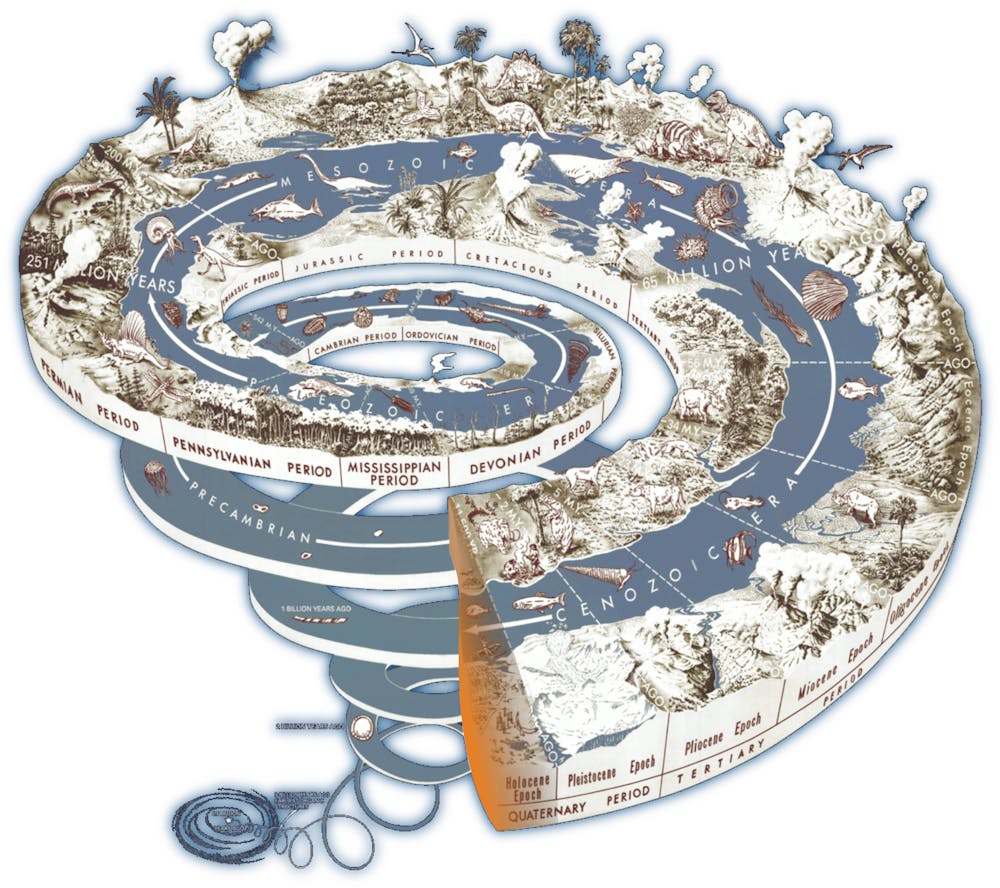- The Anthropocene Epoch began in 1950.
- The Anthropocene Working Group (AWG) proposes a new geological period known as the Anthropocene.
- Crawford Lake near Toronto in Canada’s Ontario Province is the Anthropocene’s unique reference point.

Recognising the Anthropocene Epoch
- The term “Anthropocene” was coined in 2000 by Nobel Prize-winning chemist Paul Crutzen and biology professor Eugene Stoermer.
- Human Impact: The Anthropocene is a geological time interval characterised by profound changes in the Earth’s ecology as a result of human impact, notably since the Industrial Revolution began.
- Environmental Changes: The Anthropocene is related with numerous phenomena such as global warming, sea-level rise, ocean acidification, large-scale soil erosion, lethal heat waves, and environmental deterioration.
- Geological Strata: According to the AWG’s website, these changes are recorded in a distinct body of geological strata that has the potential to be preserved in the far future.
Evidence from Crawford Lake Selected Site
- Geologists chose Crawford Lake in Canada’s Ontario Province for investigation over 11 other prospective sites.
- Sediments retained: The lake’s sediment layers have retained the annual impact of human activities on the Earth’s soil, atmosphere, and biology.
- Mid-Twentieth-Century Shift: An examination of Crawford Lake’s bottom sediments revealed a distinct shift from the mid-Twentieth-Century epoch, surpassing the limitations of the previous Holocene period.
- Captured Fallout: Over time, the lake’s sediments have captured the fallout from large-scale fossil fuel burning, nuclear weapon explosions, and the dumping of plastic and fertilisers on land and in water bodies.
Disagreements and Debate
- Community of Scientists Disagreements: Not all geologists agree on the Anthropocene epoch’s actuality.
- Disagreements focus around the epoch’s specific commencement, whether it has already begun, and the sufficiency of evidence to indicate its arrival.
The Divisions and Categories of the Geological Time Scale:
- The geological time scale of the Earth is classified into five basic categories: aeons, eras, periods, epochs, and ages.
- Fossil-Based Boundaries: Geological time scale boundaries correspond to the origin or extinction of distinct types of fossils.
- Classification as of now: We are currently in the Phanerozoic aeon, Cenozoic epoch, Quaternary period, Holocene epoch, and Meghalayan epoch.
Crawford Lake was chosen because:
- Crawford Lake was chosen because of its maintained sediment layers, which provide as an annual record of human impact.
- Overwhelming consequences: Beginning approximately 1950, distinct and multiple signs in the lake’s sediments reveal that the consequences of human activities overwhelm the Earth system.
- A distinct global ‘fingerprint’: The presence of plutonium as a result of nuclear weapon detonations is a harsh evidence of humanity’s dominance over the globe.
- Approval Process: The AWG intends to submit a request for approval to the Subcommission on Quaternary Stratigraphy (SQS) and the International Commission on Stratigraphy (ICS).
- Final Approval: The 37th International Geological Congress, to be held next year in Busan, South Korea, is likely to issue final approval.
@the end
- Geologists’ analysis of Crawford Lake gives solid evidence for the Anthropocene epoch’s existence.
- Challenging The idea for the Anthropocene epoch calls into question the current interpretation of the Earth’s official geological timeline.
- Future Determination: Further talks and approvals by international geological authorities will determine the Anthropocene epoch’s recognition and acceptance.
Source: https://www.nationalgeographic.org/encyclopedia/anthropocene/
